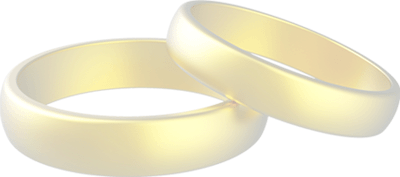Restaurant dining and eating out in Clark Pampanga: Low-Fat Diet
Definition
Different medical organizations, governments, and diet plans define ‘low fat’ slightly different ways. In this essay, a low fat diet is one where 30% or less of the total daily calories come from fats A very low fat diet is one where 15% or less of the total daily calories come from fat. By comparison, in the average American diet about 35–37% of calories come from fat.
Origins
When metabolized in the body, fats provide 9 calories per gram compared to 4 calories per gram from proteins and carbohydrates Because of this, diets plans repeatedly target reduction in fats as a good way to lose weight. Examples of low fat diets include the Pritikin diet and Scarsdale diet, both popular in the 1970s, Rosemary Conley’s Hip and Thigh Diet (late 1980s), and the Dr. Dean Ornish Diet (2000s). Research into preventing cardiovascular disease also stimulated interest in low fat diets as a pre-ventative health measure.
Description
Over the past three decades, thinking about fats has changed. In the twenty-first century, all fats are not created equal. Fats are described as either saturated or unsaturated based on their chemical structure. Saturated fats are animal fats such as butter, the fats in milk and cream, bacon fat, the fat under the skin of chickens, lard, or the fat a piece of prime rib of beef. These fats are usually solid at room temperature. Exceptions are palm oil and coconut oil, which are both liquid saturated fats. Saturated fats are ‘bad’ fats. They raise the level of LDL cholesterol (‘bad’ cholesterol) in the blood. High LDL cholesterol levels are associated with an increased the risk of heart disease.
Unsaturated fats have a slightly different chemical structure that makes them liquid at room temperatures. Unsaturated fats, especially monounsaturated fats, are ‘good’ fats that help lower cholesterol levels. Olive oil, canola oil, and peanut oil are high in monounsaturated fats. Corn oil, soybean oil, safflower oil, and sunflower oil are high in polyunsaturated fats. Fish oils that are high in omega-3 fatty acids are also polyunsaturated and have beneficial health effects.
Another type of fat, trans fat, is made by a manufacturing process that creates hydrogenated or partially hydrogenated vegetable oils. Trans fat acts like saturated fat, raising the level of LDL cholesterol. It is found in some margarines, and in many commercially baked and fried foods. Starting in January 2006, the amount of trans fat in processed foods must be listed separately from total fat on food labels.
KEY TERMS
Cholesterol—a waxy substance made by the liver and acquired through diet. High levels in the blood may increase the risk of cardiovascular disease.
Dietary supplement—a product, such as a vitamin, mineral, herb, amino acid, or enzyme, that is intended to be consumed in addition to an individual’s diet with the expectation that it will improve health.
Fatty acids—complex molecules found in fats and oils. Essential fatty acids are fatty acids that the body needs but cannot synthesize. Essential fatty acids are made by plants and must be present in the diet to maintain health.
Fatty liver—a condition in which liver cells accumulate fat. The condition is associated with alcohol abuse, obesity, and pregnancy and can result in serious damage to the liver.
Triglycerides—a type of fat found in the blood. High levels of triglycerides can increase the risk of coronary artery disease.
The federal Dietary Guidelines for Americans 2005 recommends that no more than 30% of an individual’s daily calories come from fat. Beyond that, no more than 10% of calories should come from saturated fat and people should consume as little trans fat as possible. The American Heart Association’s Nutrition Committee joined with the American Cancer Society, the American Academy of Pediatrics, and the National Institutes of Health to endorse these guidelines as part of a healthy diet. However, some experts believe that for heart health the amount of fats consumed should be much lower.
Nathan Pritikin, originator of the Pritikin Diet Plan developed a very low fat diet for heart health. The Pritikin Plan calls for less than 10% of calories to come from fat. The diet is also low in protein and high in whole-grain carbohydrates. Respected independent research shows that this diet does cause weight loss and lower risk factors for heart disease such as cholesterol and blood triglycerides Critics of the diet say that it is too difficult to stay on and that low the fat component of the diet does not allow people to get enough beneficial fats such as omega-3 fatty acids.
The Dr Dean Ornish Diet is another very low fat diet where only aboug15% of calories come from fat. The Ornish diet is an almost-vegetarian diet. It too is designed to promote heart health, and again critics claim hat it does not provide enough essential fatty acids.
Other low fat diets are designed for people who have digestive disorders. People who have gallstones or gallbladder disease often benefit from reducing the amount of fats they eat. Bile, a digestive fluid made in the gallbladder, helps break down fats. When the gallbladder is not functioning well, a low fat diet can improve digestion. Symptoms of other gastrointestinal problems, such as diarrhea, irritable bowel disorder, various malabsorptive disorders, and fatty liver, often improve on a low fat diet. People who have had weight loss surgery usually have fewer digestive problems if they eat a low fat diet.
Managing a low fat diet
People on low fat diets need to avoid certain foods. High-fat foods include whole milk and whole milk products such as ice cream or cream cheese, fried foods, marbled beef, chicken skin, spare ribs or any meat with visible fat, tuna packed in oil, regular salad dressing, potato chips and fried snack foods, and many baked goods—cookies, cakes, pies, and doughnuts.
People wishing to reduce the fat in their diet must read food labels. Food labels are required to list in the nutrition information panel nutrition facts that include calories, calories from fat, total fat, saturated fat, trans fat, cholesterol, sodium, total carbohydrates, dietary fiber, sugars, protein, vitamin A, vitamin C, calcium, and iron In addition, the following words have specific legal meanings on food labels.
• Fat-free: less than 0.5 grams of fat per serving.
• Low fat: no more than 3 grams or less of fat per serving.
• Less fat: A minimum of 25% less fat than the comparison food.
• Light (fat) A minimum of 50% less fat than the comparison food.
The home cook can also reduce fat in the diet in the following ways:
• Remove all visible fat from meat and skin from poultry before cooking.
• Bake or broil meats on a rack set in a pan, so that the fat can drip off.
• Refrigerate homemade soups and stews, then skim the solidified fat off the top before serving.
• If using canned soup or broth that contains fat, put the can in the refrigerator for a few hours, and skim the solid fat off the top before heating.
• Top pasta with vegetables instead of oil, butter, or cheese.
To reduce fat in meals when eating out:
• Choose items that are broiled, roasted or baked. Avoid fried foods.
• Select fish or chicken instead of beef or pork.
• Ask for salad dressing, butter, and gravy on the side.
• Fill up on salad with non-fat dressing at the salad bar.
Function
Low fat diets work as weight loss diets because they reduce calorie intake. The difficulty with low fat and very low fat diets is that they are difficult to maintain. Often when people go off these diets they gain weight back, then diet again, then gain weight back in a pattern of weight cycling This happens with many diets, but some research shows that people who go off low fat diets tend to binge or overeat more than people who go off more moderate diets.
Low fat diets are effective in improving certain digestive symptoms. A general low fat diet is usually prescribed first, and then fine-tuned with the aid of a physician to best treat the individual’s digestive problems.
Benefits
People who go on low fat diets can benefit in these ways:
• They lose weight.
• Their health usually improves.
• Their risk of developing cardiovascular disease may decrease.
• They get relief from unpleasant gastrointestinal symptoms.
Precautions
Young children, pregnant women, breastfeeding women, and the elderly are not good candidates for very low fat diets. These groups have special nutritional needs that are unlikely to be met by very low fat intake.
Low fat diets are difficult to maintain for long periods. They may increase the risk of yo-yo dieting or weight cycling.
Risks
Although many low fat diets have been shown to be healthy, individual diets vary, and some low fat diets are not nutritionally balanced.
Research and general acceptance
Many health claims have been made for low fat diets. One is that they help people lose weight better than other diets. However, studies have shown that low fat diets are no better at helping people lose weight and keep that weight off than regular low-calorie diets. The total amount of calories has more effect on weight loss than the particular foods those calories come from.
Critics of this study claim that the low-fat group did not reduce their fat significantly enough to make a difference in health and that the study did not cover enough time. Others said that eating unsaturated fat (a Mediterranean diet) was heart healthy and that this study did not distinguish between saturated and unsaturated fat intake. Supporters of the study have said that it shows that how much people eat and how much they exercise (their calorie balance) are more important than what they eat. This study is likely to stimulate more research into low fat diets and the health differences between unsaturated and saturated fats.
Source: http://www.diet.com/g/lowfat-diet
Wedding couples like the idea of a getaway to travel out of town from Manila to the north and book beautiful outdoor venues in highly recommended top rated hotels and resorts. One of the most popular wedding spot in the north is Clearwater Resort and Country Club. This hotel in Clark offers over ten outdoor garden venues for wedding receptions as small as 50 guests to over 500 persons. These are private venues and all event venues offer a special kind of romantic ambience to help make the wedding reception a memorable one.
Pampanga is an important province of the Philippines slated to be the next business and tourism center of the country. Already international traffic prefers the Clark International Airport and tourists find Clark Freeport Zone easier to get around than Manila. Safety, low crime rate, no traffic and low pollution levels all contribute to making Pampanga Angeles City Clark Freeport Zone a preferred destination for local and international tourists.
For reservations, comments and inquiries,
www.philippinesweddingvenue.com
Philippines Wedding Venues Service Center
Creekside Road corner of Centennial Road,
Central Business District, Clark Freeport Zone,
Pampanga, Philippines 2023
Tel: (045)599-5949 0917-520-4403 0922-870-5177
Manila Sales Office
3003C East Tower, Phil Stock Exchange Center,
Exchange Rd Ortigas Metro Manila, Philippines 1605
(632) 637-5019 0917-520-4393 Rea or Chay
Email: Wedding@Yats-International.com
For any assistance in planning and organizing a wedding ceremony, indoor or outdoor garden reception or to find other wedding service providers, Click here to contact us click here
For assistance in hotel and resort bookings in Clark, Pampanga, Philippines, log on to
http://www.HotelClarkPhilippines.com
To inquire with the highly recommended beach resort hotel in Clark Pampanga visit http://www.ClearwaterPhililippines.com
For more information about Clark, Pampanga, Philippines log on to
http://www.ClarkPhilippines.com









